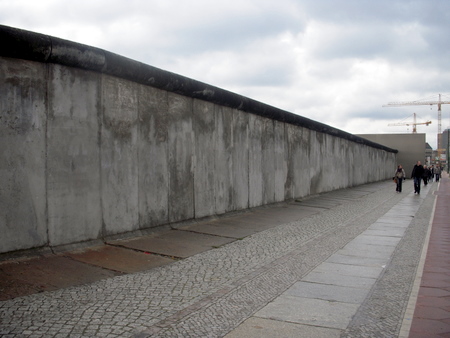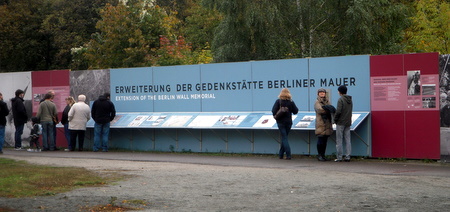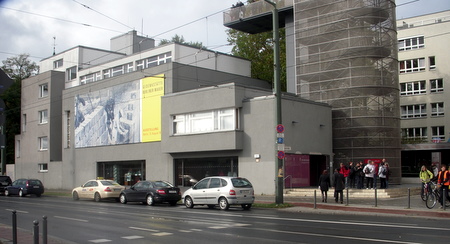I was 10 and living in suburban America when the Berlin wall fell. I remember learning about it in school and not quite understanding what it was all about. The Wall made another brief appearance during an undergraduate European history course (I understood it better that time around) and I began to appreciate the symbolism of this massive barrier. However, until I stood at the foot of one of the last remaining stretches of wall in Berlin, I had never fully pondered the impact of this structure on the people who lived in the city.
 As I looked up at the relatively low wall (9 feet, 11 feet with the 2 feet of barbed wire that ran along the top of the wall – I had always imagined it to be higher), I wondered what it would be like to wake up one morning and not be able to see those I cared most about, to know that the landscape of my city had drastically changed, and that my home city may never be the same again.
As I looked up at the relatively low wall (9 feet, 11 feet with the 2 feet of barbed wire that ran along the top of the wall – I had always imagined it to be higher), I wondered what it would be like to wake up one morning and not be able to see those I cared most about, to know that the landscape of my city had drastically changed, and that my home city may never be the same again.
The border was sealed off along Bernauer Strasse on August 13, 1961, causing a drastic shift in the daily lives of those living on this street. Residents of Prenzlauer Berg could no longer travel freely through their own neighborhood. Even worse, neighbors, friends, and relatives were separated from one another. The house across the street was suddenly part of a different political paradigm.
 Due to the geographical placement of their homes, the people of Bernauer Strasse became directly implicated in this important period in post-war German history. Out of desperation and panic, people jumped out of the windows of apartments along Bernauer Strasse. Though some were successful in making it to West Berlin, many lost their lives.
Due to the geographical placement of their homes, the people of Bernauer Strasse became directly implicated in this important period in post-war German history. Out of desperation and panic, people jumped out of the windows of apartments along Bernauer Strasse. Though some were successful in making it to West Berlin, many lost their lives.
The section of the former border strip running from Behmstrasse to Bernauer Strasse is now known as Mauer (“wall”) Park. In addition, you can see various fragments of the wall from Behmstrasse along Norwegerstrasse in the direction of Bornholmer Strasse or from Eberswalder Strasse along Bernauer Strasse. Along Bernauer Strasse, there is an informational wall  (called a “street gallery”) with photos, testimonials and descriptions of experiences associated with the wall.
(called a “street gallery”) with photos, testimonials and descriptions of experiences associated with the wall.
Another part of the memorial is the The Berlin Wall Documentation Center, located on Bernauer Strasse. It is home to a wide variety of exhibits, archival information, and opportunities to explore the history of the Berlin Wall. The center also hosts seminars on politics and other events throughout the year. It is open Tuesday-Sunday 10 a.m. – 6 p.m. (March to November: 10 a.m. – 5 p.m.).
S-Bahn station Nordbahnhof (S1, S2), U-Bahn station Bernauer Strasse (U8), Bus 245


Comments